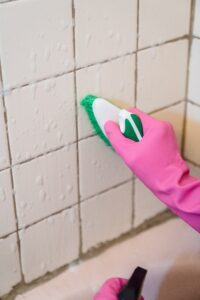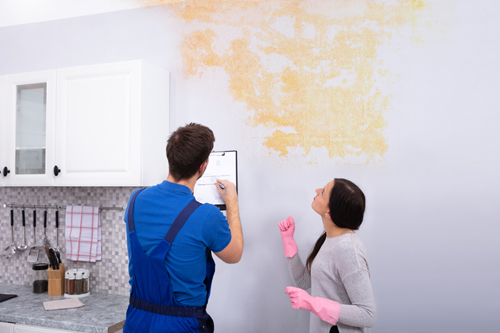Wall Water Stains Revealed - Your Roadmap To Checks And Repairs
Wall Water Stains Revealed - Your Roadmap To Checks And Repairs
Blog Article
We've noticed this article on Indicators of Water Damage Behind Walls directly below on the internet and accepted it made sense to talk about it with you on my blog.

Water spots on wall surfaces are not pleasant to the eyes. Often it appears practically unpreventable to experience water stains on wall surfaces in residences.
Property owners staying in humid areas frequently deal with the worry of water spots on wall surfaces. That does not have to be the instance for you. With accurate and all-around info on the causes of water stains and timely fixing processes, you will constantly be an action ahead of such events. So, this short article guarantees to be a handy overview for you.
3 Common Reasons For Water Spots on Wall Surfaces
In contrast to common belief, water discolorations on wall surfaces do not constantly originate from inadequate structure products. There are numerous causes of water stains on walls. These include:
Poor Drainage
When making a building plan, it is crucial to ensure adequate drainage. This will certainly protect against water from permeating right into the wall surfaces. Where the water drainage system is blocked or missing, underground wetness develops. This links to excessive wetness that you notice on the wall surfaces of your structure.
So, the leading reason for wet walls, in this instance, can be an inadequate drain system. It can also be due to inadequate administration of sewage pipes that go through the structure.
Damp
When warm damp air consults with dry cool air, it triggers water droplets to form on the wall surfaces of structures. When there is heavy steam from cooking or showers, this occurs in washrooms as well as kitchen areas. The water beads can discolor the surrounding walls in these parts of your house and infect other areas.
Damp or condensation influences the roofing system and also walls of structures. When the wall is damp, it creates an appropriate environment for the development of fungi and also microbes.
Pipeline Leaks
Many residences have a network of water pipes within the wall surfaces. This ensures that the pipes are faraway from the reach of destructive rodents. It constantly increases the feasibility of such pipes, as there is little oxygen within the walls. This inhibits rust.
A downside to this is that water leak influences the walls of the building and also creates widespread damages. A dead giveaway of faulty pipes is the appearance of a water discolor on the wall surface.
Water Stains on Wall: Repair Service Tips
When dealing with water discolorations, homeowners would typically desire a fast solution. They would soon recognize this is detrimental as the water discolorations persist. Below are a couple of helpful suggestions that will direct you in the repair service of water discolorations on wall surfaces:
Pro Idea
A houseplant in your home also raises its humidity. So, if the house is already humid, you might intend to introduce houseplants with minimal transpiration. An instance of appropriate houseplants is succulents.
Final thought
Although no one wants to have water discolorations on walls in their residence, it can occur to the very best of us. This post gives you leverage, as you currently understand how to manage this incident if it does occur.
It is constantly best to recruit professional solutions to assist repair the damages in your house.
Often it seems virtually inescapable to experience water stains on wall surfaces in houses.
Contrary to preferred idea, water stains on wall surfaces do not always stem from inadequate building materials. There are numerous causes of water discolorations on wall surfaces. The water droplets can tarnish the surrounding wall surfaces in these parts of your residence as well as spread to other locations.
Here are a couple of valuable tips that will certainly guide you in the fixing of water spots on wall surfaces:
CHECKING FOR WATER DAMAGE
Water damage can be costly, and it may begin before you even notice the first signs of trouble. Water damage can cause mold and mildew in your walls and floors, which can create an abundance of health concerns for your family. It can also lead to costly repairs of various appliances and general home fixtures. To avoid the pricey consequences of water damage, here are Warner Service’s top 5 places you should check:
The walls – The easiest place to spot the beginnings of water damage is on the walls and ceilings of your home. If water damage is present, there will most likely be water stains, especially around the windows and doorframes, and/or cracks in the drywall. If a stain looks unusual (discolored to brown, black or gray, raised texture), has a swollen appearance or is soft to the touch, contact a professional immediately. The pipes – To avoid water damage, consistently check the pipes in your kitchen (especially the dishwasher and ice maker), bathrooms, laundry room (specifically washing machines) and basement for corrosion, leaks and water stains. Pay special attention to where the pipes connect in your home and the location of caulking around the bathroom fixtures, including toilets, sinks, showers and tubs. Missing or loose caulking and grout could be signs of leaking water. This seepage can also quickly cause mold and rust, so double check your water heater and tank for wet spots on the floor. The floor – Water damage is very easy to spot on the floor. Look for any warping or buckling of the material, especially in the basement. If your home has wood flooring, look for bright white or dark stains. If your home has carpeting, keep it dry and clean. A damp carpet that smells of mold could cause water damage and health problems. To avoid this, consider installing floor pans under your appliances to help prevent damages from small, slow and undetected leaks. The basement and attic – If your basement or attic smells odd check for mold and mildew around the area, especially the valley where the roof meets. While you are inspecting those areas, check for wall cracks, floor stains, rust and dampness in the insulation. If you live in a colder and/or rainier climate, perform routine checks for water damage from melting snow or ice and rain. The exterior – Check the roof for damaged flashing and missing, cracked or curled shingles. There should also be no standing water anywhere outside your home. This could be caused by puddles, leaky rain gutters or hoses, poor drainage, or short gutter spouts. Invest in a sump pump system or water flow monitoring system, and perform routine maintenance on these outdoor appliances to avoid indoor water damage.

I hope you enjoyed our post on . Thanks for taking time to read our blog. Sharing is nice. Helping others is fun. Thank you for your time invested reading it.
View Website
Report this page